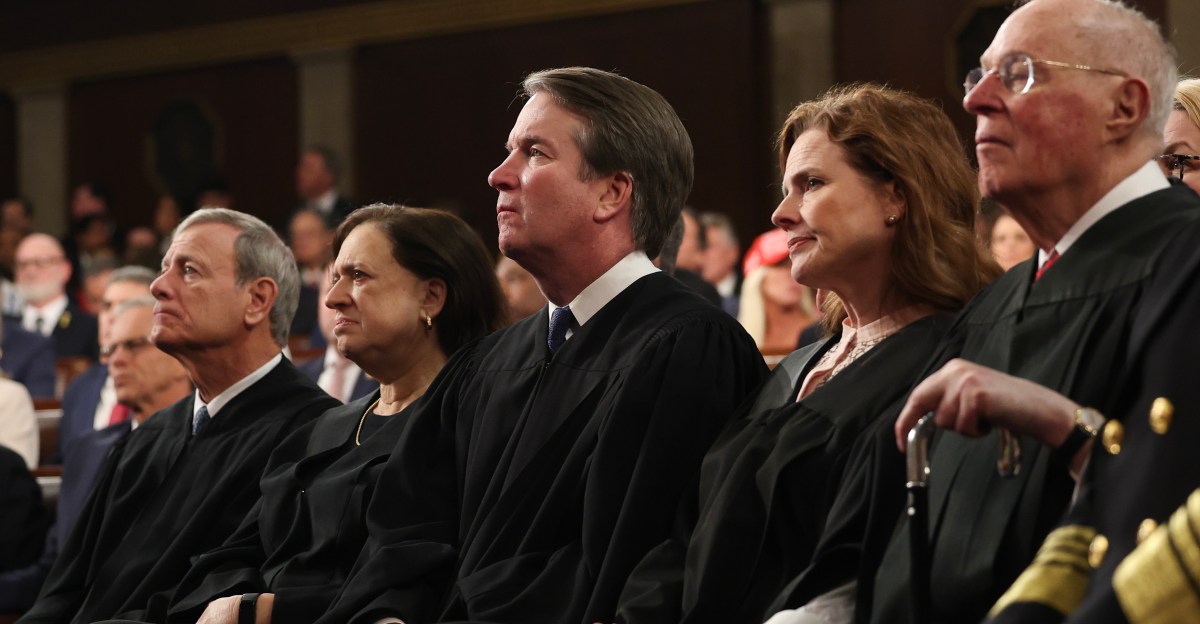Kavanaugh and Barrett: A Potential Shift from the Supreme Court’s MAGA Influence
As the United States navigates through a politically charged landscape, the Supreme Court stands as a pivotal institution influencing the nation’s laws and policies. Justices Brett Kavanaugh and Amy Coney Barrett, appointed during the Trump administration, have often been associated with the court’s alignment to the MAGA (Make America Great Again) agenda. However, recent discussions suggest that both justices may be poised to diverge from this trajectory, potentially reshaping the future direction of the judiciary. This shift could have profound implications for key legal battles and upcoming rulings, as well as for the broader political climate in America.
The Current Landscape of the Supreme Court
The Supreme Court has often been viewed through a partisan lens, with justices being categorized as either conservative or liberal, a trend that has intensified in recent years. The court’s conservative bloc, which includes Kavanaugh and Barrett alongside Justices Clarence Thomas, Samuel Alito, and Neil Gorsuch, has been instrumental in decisions that reflect a more traditionalist interpretation of the law. These rulings often align with the values and policies championed by the MAGA movement, particularly in areas such as abortion rights, gun control, and immigration.
However, the dynamics within the court are not static. Judicial philosophies can evolve, and justices may find themselves reconsidering their positions based on new legal precedents, societal changes, or personal reflections. This potential for evolution is particularly relevant for Kavanaugh and Barrett as they navigate their roles in a court that is being scrutinized for its alignment with political ideologies.
Kavanaugh’s Judicial Approach: A Potential Shift?
Justice Brett Kavanaugh, who joined the Supreme Court in 2018, has often been characterized by his judicial conservatism. Nevertheless, his recent opinions suggest that he may be open to a more nuanced approach. Kavanaugh’s rulings in cases involving administrative law and regulatory authority indicate a willingness to consider the implications of his decisions beyond mere ideological lines.
For instance, in cases concerning environmental regulations and agency powers, Kavanaugh has shown a tendency to prioritize the principles of administrative law over strict adherence to conservative orthodoxy. This could signal a potential shift away from the MAGA influence, particularly as the nation grapples with pressing issues such as climate change and public health.
Barrett’s Perspective: Balancing Ideology and Pragmatism
Justice Amy Coney Barrett, appointed in 2020, has also been viewed through the prism of her conservative credentials. However, her academic background and judicial philosophy emphasize the importance of legal pragmatism. Barrett’s previous work as a law professor and her emphasis on historical context in legal interpretation suggest she may prioritize the rule of law over ideological conformity.
Barrett’s recent engagement in discussions about reproductive rights and healthcare indicates her awareness of the broader societal implications of the court’s decisions. As the country faces heightened debates over abortion access, particularly following the overturning of Roe v. Wade, Barrett’s perspective may evolve to consider the impact of judicial decisions on women’s rights and healthcare access.
Implications of a Shift in the Court’s Direction
If Kavanaugh and Barrett indeed pivot away from the MAGA-aligned bloc, the implications could be significant. A more moderate approach could influence several key areas of law:
- Reproductive Rights: A shift could open doors for more balanced discussions surrounding access to reproductive healthcare, potentially leading to more nuanced rulings that might protect women’s rights while considering state interests.
- Environmental Regulations: An inclination towards supporting regulatory frameworks may allow for stronger environmental protections, reflecting a growing public concern for climate issues.
- Voting Rights: A more moderate judicial stance could lead to rulings that uphold and protect voting rights, countering recent legislative moves aimed at restricting access to the ballot box.
The Role of Public Opinion and Political Pressure
The Supreme Court is not insulated from the effects of public opinion and political pressure. As societal values shift, justices may feel compelled to reassess their positions. Kavanaugh and Barrett are likely aware of the intense scrutiny their decisions face from both the public and political entities. This awareness could contribute to their potential pivot away from strict MAGA alignment.
Moreover, the increasing polarization in American politics could incentivize justices to carve out a more centrist path. As the nation grapples with divisions over issues such as healthcare, immigration, and social justice, a Supreme Court that reflects a broader spectrum of viewpoints may be essential in fostering legal stability and public trust.
Conclusion: The Future of the Supreme Court
In summary, the potential shift of Justices Kavanaugh and Barrett away from the Supreme Court’s MAGA influence raises important questions about the future direction of the judiciary. Their evolving judicial philosophies may lead to a court that is more responsive to contemporary societal issues, rather than being strictly beholden to partisan agendas.
This shift could not only reshape key legal battles but also influence the broader political landscape in the United States. As both justices navigate their roles in a highly visible and consequential institution, their decisions will undoubtedly play a critical role in determining the future of American law and society.
Ultimately, the potential for Kavanaugh and Barrett to diverge from their previous alignment presents a hopeful outlook for those advocating for a judiciary that upholds the principles of justice, equity, and the rule of law. As the Supreme Court continues to evolve, one can only anticipate how these changes will unfold in the years to come.
See more BBC Express News

